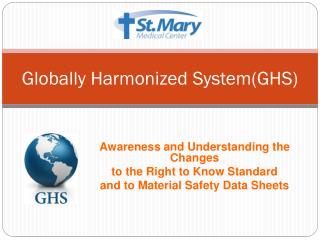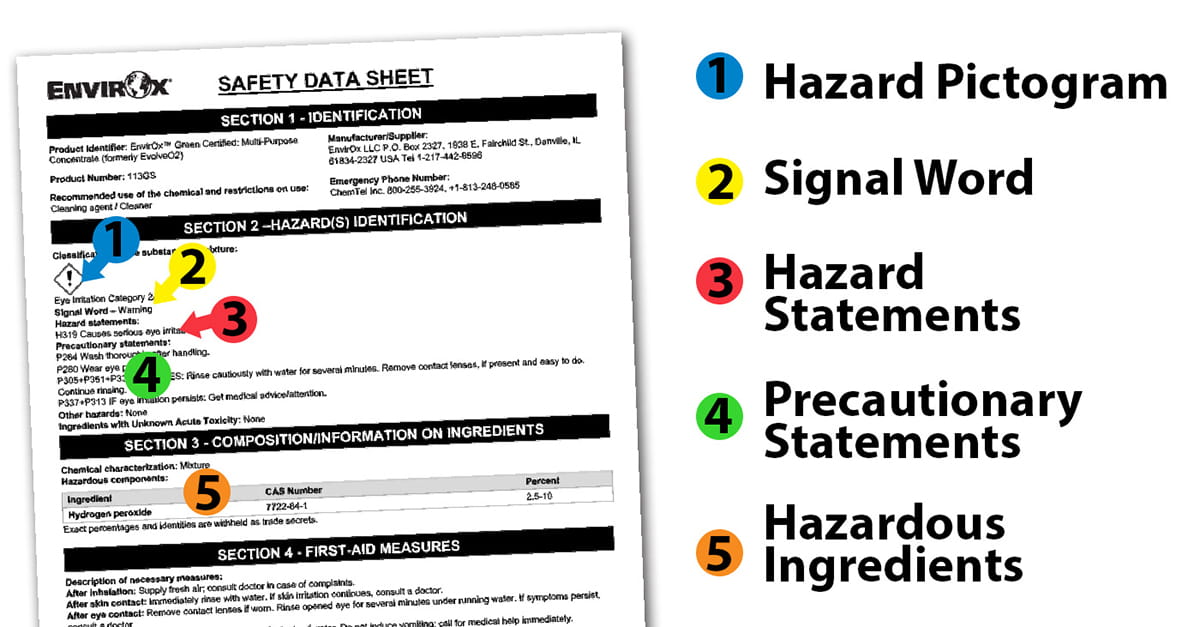

H280 - Contains gas under pressure may explode if heated H271 - May cause fire or explosion strong oxidizer H270 - May cause or intensify fire oxidizer H261 - In contact with water releases flammable gas H260 - In contact with water releases flammable gases which may ignite spontaneously H252 - Self-heating in large quantities may catch fire H250 - Catches fire spontaneously if exposed to air H241 - Heating may cause a fire or explosion H225 - Highly flammable liquid and vapour H224 - Extremely flammable liquid and vapour H203 - Explosive fire, blast or projection hazard H202 - Explosive severe projection hazard If you have any questions or would like to learn more about GHS compliance, please contact tech support or visit the GHS website.

Our Safety Data Sheets (SDSs) are standardized and chemical labeling has changed to include signal words, pictograms, and hazard and precautionary statements. As your partner, we are committed to your safety. Additionally, safety data sheets would have a standardized format.

Under the GHS, if a product is considered hazardous, labels would include signal words, pictograms, and hazard and precautionary statements. It also specifies hazard communication elements for labeling and safety data sheets. The GHS covers all hazardous chemicals and provides a single set of harmonized criteria for classifying chemicals according to their health and physical hazards. The primary benefit of the GHS is to increase the quality and consistency of information provided to all chemical users by adopting a standardized approach to hazard classification, labels and safety data. The United Nations introduced the Globally Harmonized System (GHS) of Classification and Labeling of Chemicals and OSHA has revised its Hazard Communication Standard (HCS) to ensure we are all communicating in the same language as it relates to the safe handling of chemicals. As a global company, we are committed to speaking the same language, especially when it comes to chemicals.


 0 kommentar(er)
0 kommentar(er)
